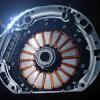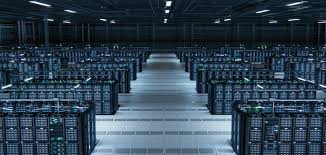
Breaking News
 "World's most power dense" electric motor obliterates the field
"World's most power dense" electric motor obliterates the field
 Robot metabolism: The next evolution of our overlords?
Robot metabolism: The next evolution of our overlords?
 Trump's $1 trillion AI data center boom strains Texas grid -- nuclear power eyed as solution
Trump's $1 trillion AI data center boom strains Texas grid -- nuclear power eyed as solution
 OpenAI ChatGPT Agent for Tool Use, Shopping and Other Activity
OpenAI ChatGPT Agent for Tool Use, Shopping and Other Activity
Top Tech News
 The Wearables Trap: How the Government Plans to Monitor, Score, and Control You
The Wearables Trap: How the Government Plans to Monitor, Score, and Control You
 The Streetwing: a flying car for true adventure seekers
The Streetwing: a flying car for true adventure seekers
Magic mushrooms may hold the secret to longevity: Psilocybin extends lifespan by 57%...
 Unitree G1 vs Boston Dynamics Atlas vs Optimus Gen 2 Robot– Who Wins?
Unitree G1 vs Boston Dynamics Atlas vs Optimus Gen 2 Robot– Who Wins?
 LFP Battery Fire Safety: What You NEED to Know
LFP Battery Fire Safety: What You NEED to Know
 Final Summer Solar Panel Test: Bifacial Optimization. Save Money w/ These Results!
Final Summer Solar Panel Test: Bifacial Optimization. Save Money w/ These Results!
 MEDICAL MIRACLE IN JAPAN: Paralyzed Man Stands Again After Revolutionary Stem Cell Treatment!
MEDICAL MIRACLE IN JAPAN: Paralyzed Man Stands Again After Revolutionary Stem Cell Treatment!
 Insulator Becomes Conducting Semiconductor And Could Make Superelastic Silicone Solar Panels
Insulator Becomes Conducting Semiconductor And Could Make Superelastic Silicone Solar Panels
 Slate Truck's Under $20,000 Price Tag Just Became A Political Casualty
Slate Truck's Under $20,000 Price Tag Just Became A Political Casualty
 Wisdom Teeth Contain Unique Stem Cell That Can Form Cartilage, Neurons, and Heart Tissue
Wisdom Teeth Contain Unique Stem Cell That Can Form Cartilage, Neurons, and Heart Tissue
Trump's $1 trillion AI data center boom strains Texas grid -- nuclear power eyed as solution

Experts warn that the state's energy infrastructure, already strained by extreme weather and rising consumption, lacks the capacity to support the surge of high-intensity computing facilities slated for construction.
The AI Energy Crisis
The push for AI dominance has collided with the reality of power scarcity. ERCOT, Texas' grid operator, recently cautioned that new data centers—some requiring as much electricity as small cities—could overwhelm the system. "These facilities are bringing their own power solutions, like natural gas or SMRs [small modular reactors], but it's not enough," said David Tice, a grid resilience advocate and producer of the documentary Grid Down, Power Up.
Nuclear energy is now central to the debate. Trump's partnership with tech leaders includes plans for 10 new Westinghouse AP1000 reactors, each generating 1,100 megawatts, to come online by 2030. But delays and cost overruns plague large-scale nuclear projects, prompting calls for decentralized alternatives like SMRs and microgrids.
EMP Threats and Cyber Warfare
The vulnerability of centralized grids adds another layer of risk. Tice emphasized that adversaries could disable the U.S. power network by targeting just nine critical substations—a threat exacerbated by drone warfare tactics seen in Ukraine. "China already has malware embedded in our grid components," he warned, advocating for domestic manufacturing of key infrastructure parts.
Nuclear plants themselves are not immune. An EMP attack or solar flare could cripple cooling systems, risking Fukushima-style meltdowns. "We need EMP-hardened reactors and redundant safeguards," Tice urged.
The China Factor
While the U.S. debates nuclear expansion, China surges ahead, adding coal plants at a rate of one every other day. "Energy is the pathway to AI dominance," noted Mike Adams, host of Brighton.com. "China manipulates climate rhetoric to handicap the West while outproducing us." America's reliance on Chinese-made transformers, inverters, and rare-earth magnets further complicates energy independence.
Decentralization vs. Deep State
Adams and Tice proposed radical solutions: localized microgrids, open-source robotics for agriculture, and AI-managed energy storage. "Decentralization is our only hedge against sabotage," Adams argued, citing Tesla's pivot toward compact fusion reactors and off-grid data centers.



